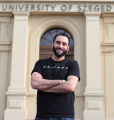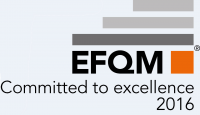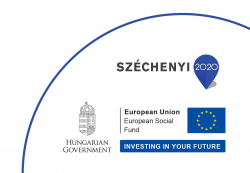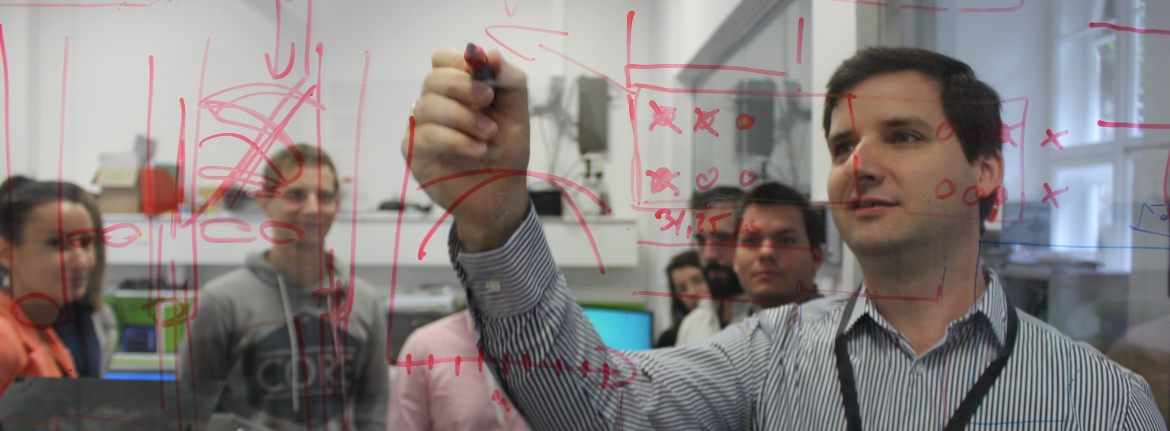
Antal Berényi: „If you have a good idea, try to put it into practice”
“What is the essence of research? We might say that it is making a new search, that is re-searching. The problem posed and the questions asked in science do not change, but developments in methodology can bring about new results,” states Antal Berényi, leader of a group that carries out research in a really friendly atmosphere, who also teaches students of medicine at the University of Szeged.
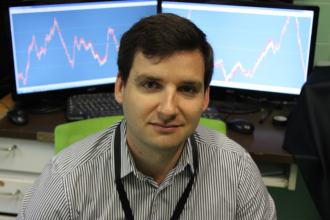 - You were one of the founders of the Students in Research Movement (KutDiák) as a high-school student in Péteri. You were twice awarded a Scholarship Granted by the Republic as a student at the Faculty of Medicine here at the University of Szeged. As a doctoral student in Szeged, you began with the development of an experimental model for research on eyesight, and then you arrived at fundamental questions concerning the functioning of the brain. Did you consciously plan to be a researcher?
- You were one of the founders of the Students in Research Movement (KutDiák) as a high-school student in Péteri. You were twice awarded a Scholarship Granted by the Republic as a student at the Faculty of Medicine here at the University of Szeged. As a doctoral student in Szeged, you began with the development of an experimental model for research on eyesight, and then you arrived at fundamental questions concerning the functioning of the brain. Did you consciously plan to be a researcher?
- Yes. Several generations of my family graduated from the University of Szeged. I also owe very much to my mentors. As a postdoctoral researcher, I had the great fortune to work in one of the world’s leading laboratories in New York, with György Buzsáki, a researcher into the brain’s rhythmic activities. I was introduced to this world-famous neuroscientist at a conference in Budapest by my mentor from Szeged, Professor György Benedek.
- How do you explain your significant successes in the United States, even as a junior researcher?
- My work was financed by a European Union scholarship, that is, by Brussels. In New York I was set free. The leader of the laboratory, Professor Buzsáki, had a working method characterized by expecting good ideas which the researcher would be happy to work on, since they would eventually produce results. We succeeded by proving in animal experiments that a certain type of epileptic seizures can be stopped by extracranial stimulation. My article in Science Magazine was a result of that research. One of the articles that I co-authored is about the development and testing of a transgenic animal strain that can be used in optogenetic experiments, and another reviews the results of research on the hippocampus, one of the most important organs of the brain from the aspects of spatial orientation and memory.
- Black and white rats are among your very important ‘co-workers’. Why is it that these particular animals are so suitable for the study of brain functions?
- Because they have good eyesight. Some of them are specially bred and transgenic animals that have a particular ‘channel protein’ implanted in their cells which can be opened or closed with light. If light can be sent to a given cell with a glass fibre, the researcher can take control over the cell with impulses of light. In this way the behaviour of the brain neurons can be influenced from outside.
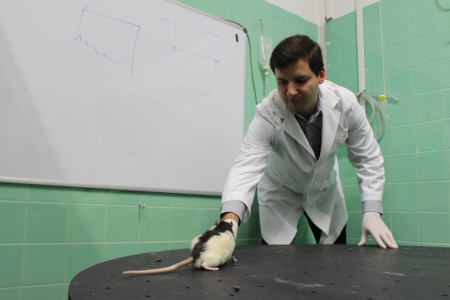
- Besides your qualifications in medicine and neuroscience, you have a degree in medical economics from the University of Szeged. As a winner of the Momentum “Lendület” Program of the Hungarian Academy of Sciences, you moved back to Szeged and won an EU application to receive a prestigious ERC Starting Grant. This is an outstanding achievement. You have 3 million dollars at your disposal until 2018. What is the state of your scientific agenda at this point, in the autumn of 2015?
- I have set up the ‘Hungarian Academy of Sciences – University of Szeged Momentum Oscillatory Neural Networks Research Group,’ consisting of Hungarian, Spanish and Japanese researchers. The administration work takes several hours of my day, while I also have to manage the EU project. I additionally give seminars to students of medicine in the University of Szeged’s Department of Physiology. The central theme of our common research is the study of epilepsy. We hope to develop tools or methods that function similarly to pacemakers. When pathological activity occurs in the brain, we would like to use electric stimuli to normalize the brain functioning as soon as possible. This method may later be promising in the treatment of depression, for example. Another of our topics is the study of the hippocampus. I expect very much here from the launching of our unique optogenetic laboratory in Szeged. We can explore the functioning of the brain at a deeper level and obtain more sophisticated answers while we record data from animals whose movements are unrestricted. I consider it my greatest achievement that I can work with a strong international team in which several fields of study are represented. This will be efficient. For every new step in our work, we need a new idea. In leading our common work, I rely on the American model: ‘If you have a good idea, try to put it into practice!’
Momentum (“Lendületben”)
Mention may be made of a few previous winners of Momentum grants.
The first grant winner from the University of Szeged of the Hungarian Academy of Sciences in the Momentum program was the chemist Tamás Martinek, in 2011. His work may bring us closer to the early recognition and treatment of Alzheimer's disease and certain tumorous diseases, through the study of foldamers, i.e. artificially produced polymers capable of shaping themselves into ordered structures. He has produced novel systems that mimick biomolecules, which may help in the development of modern pharmaceutical agents, and foldamers are likely to be used for this purpose in the future, since their structures can be pre-programmed, and they are capable of bonding to proteins via a large area of their surface, as described on the website of the Hungarian Academy of Sciences. Ákos Kukovecz, a researcher into nanotechnology, performs investigations on fluid-solid interface phenomena in meso- and macroporous nanocomposite materials in order to develop high-performance analytical sensors. The neurophysiologist Antal Berényi conducts research to establish a treatment procedure that can decrease the occurrence and duration of epileptic seizures. Csaba Janáky carries out chemical research aimed at promoting the exploitation of solar energy through the study of complex materials based on inorganic semiconductive and organic conductive polymers that can be used for the direct production of fuels such as methanol through the use of carbon dioxide and solar light. Gastroenterologist Péter Hegyi studies pancreatitis with the objective of identifying points of attacks for drugs that can block inflammation and decrease the severity of the pathogenic condition.
Ilona Újszászi
Photo: Anna Bobkó




